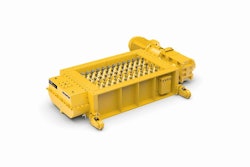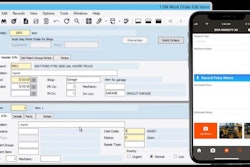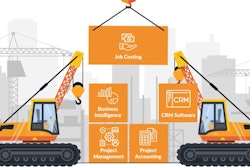
Komatsu yesterday announced increased interoperability for My Komatsu, its digital interactive hub for telematics data, parts, manuals and other support tools, which now offers increased capabilities to integrate and display fleet data from other equipment brands. This has implications not only for Komatsu customers, but is also part of a trend towards greater interoperability that will broadly influence construction telematics.
Across the board, telematics systems from major original equipment vendors (OEMs) are on track to become more open and interoperable. This is beneficial in a maturing market, where OEMs may be realizing they need to balance a commercial desire to increase customer share with the reality of mixed fleets.
As this trend continues, it may put OEMs like Komatsu more squarely in competition for telematics solutions from third parties.
OEM Telematics Opening Up
In recent remarks to OEM Off Highway, Adam Livesay, co-founder and chief commercial officer of Seattle-based industrial internet of things (IoT) vendor Elevāt.IoT, equipment vendors are waking up, smelling the coffee and making their technology stacks more open to external systems. Livesay’s firm helps equipment manufacturers design telematics and internet of things (IoT) systems for equipment products.
“The biggest change I have seen in the last few years is companies being comfortable using software APIs,” Livesay said, referring to the application programming interfaces that enable various software and hardware solutions to communicate with each other across all industries. “If an OEM designs a system that has a proprietary control software or algorithm, that sets up barriers. A tree trimming company using a piece of equipment may define utilization of a piece of equipment using that algorithm or telematics product differently than their competitor, or the same technology is used in a different application like street sweeping and productivity must then be captured in a different way.”
This trend, bolstered by the ISO/TS 15143-3:2020 standard for earth-moving machinery and mobile road construction machinery. This standard originates from the earlier AEMP 2.0 from Association of Equipment Management Professionals (AEMP), which has been influencing OEM telematics design for a number of years. It was first published in 2016.
Mixed Fleet on a Single Pane of Glass
With the current iteration of My Komatsu, contractors can access visual analyses of data collected from numerous sources displayed on dashboards. My Komatsu can pull and analyze data from Komtrax, Komtrax Plus, ISO API 15143-3 (AEMP 2.0) data from other OEMs with a single sign-on and interface.
“Komatsu understands that our customers are busy and expect technology to be easy to use,” said Matthew Beinlich, director of digital support solutions for Komatsu. “Starting today, our customers can get the most important telematics data, such as location, hours, fuel consumption, idle ratio and production, from My Komatsu for many of the other brands of equipment they may operate. Enter the ISO 15143-3 API credentials for those brands into My Komatsu once, and you’ll no longer need to log into each OEM’s system separately each day.”
The system has been designed to make it easy to collect, visualize and monitor telematics data from both Komatsu and non-Komatsu machines.
- Quickly view and manage data on one dashboard
- Receive maintenance alerts and order parts
- Troubleshoot to help minimize downtime
- Monitor for theft and unauthorized use
- Benchmark machine performance
- Track fuel consumption and manage fuel efficiency
- Access data anytime
- OEM telematic systems could enter pitched battle with third party software as they offer multiple equipment vendor data on a single pane of glass
Impact on Fleet Management Software
My Komatsu is not the first OEM telematics system to open itself up to other equipment brands. Caterpillar, Volvo and others have as well, and the future will see increasing interoperability.
What remains to be seen is how third party telematics vendors, including Tenna, Fleetio, HCSS Telematics, Samsara and others will position themselves as OEM telematics software erodes their value proposition for contractors operating mixed fleets. Telematics and GPS-enabled fleet software management vendors already may have an edge in some areas of functionality, and in integration with third party systems used elsewhere in a construction business. HCSS for instance integrates with a newly-launched heavy-civil construction enterprise resource planning (ERP) software extension for Microsoft Dynamics 365 from SIS LLC. Tenna has expanded an existing integration with Viewpoint ERP. now part of Trimble Construction One.




















